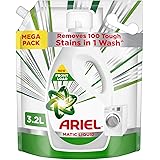iQOO Z9s 5G (Onyx Green, 8GB RAM, 256GB Storage) | 120 Hz 3D Curved AMOLED Display | 5500 mAh Ultra-Thin Battery | Dimesity 7300 5G Processor | Sony IMX882 OIS Camera with Aura Light
₹21,999.00 (as of December 22, 2024 20:33 GMT +05:30 - More infoProduct prices and availability are accurate as of the date/time indicated and are subject to change. Any price and availability information displayed on [relevant Amazon Site(s), as applicable] at the time of purchase will apply to the purchase of this product.)Why Choose Vertical Tanks?
Vertical tanks are a widely preferred solution for water storage, mainly due to their space-saving design and ability to handle high volumes efficiently. The tall, narrow structure of these tanks makes them perfect for settings where floor space is limited. Unlike horizontal tanks, vertical tanks are designed to stand upright, which allows them to store larger amounts of water without occupying too much ground area.
These tanks are commonly made from high-density polyethylene (HDPE), which provides resistance to environmental stressors such as UV rays, corrosion, and extreme weather conditions. The durable nature of HDPE makes vertical tanks ideal for both indoor and outdoor installations. Additionally, vertical tanks can be fitted with accessories like level indicators, vents, and overflow protection, ensuring maximum safety and functionality. Whether for residential use, agricultural purposes, or industrial applications, vertical tanks offer a wide range of benefits.
The Versatility of the 150 Gallon Water Tank:
Among the various sizes available, the 150 gallon water tank is one of the most versatile options on the market. With a capacity of 150 gallons, this tank is large enough to meet the water needs of small to medium households while still being compact enough for easy placement in basements, garages, or small outdoor areas. The size is ideal for storing potable water, making it perfect for emergency water storage, irrigation systems, or even rainwater harvesting projects.
The 150-gallon water tank can also serve as an essential component in industries that require smaller volumes of water for specific processes. Given its manageable size, it is often used in laboratories, small-scale agricultural setups, or even commercial kitchens for consistent water availability.
In terms of design, these tanks are built with a smooth interior that prevents the buildup of algae and other contaminants. Additionally, they often come equipped with a domed top to prevent debris from entering, ensuring clean water storage over extended periods. Many manufacturers also offer customization options, such as different fittings and outlets, which can be added based on specific usage requirements.
Installation and Maintenance of Vertical Tanks:
One of the most appealing aspects of vertical tanks, including the 150-gallon water tank, is their straightforward installation process. These tanks typically require a level, stable surface and minimal support structures, making them easy to integrate into existing systems. Vertical tanks are also compatible with a variety of plumbing fixtures, allowing for easy connections to water supply lines or pumps.
In terms of maintenance, vertical tanks are designed to be low-maintenance. However, regular cleaning is essential to ensure the tank’s longevity and the cleanliness of the stored water. The smooth surface of HDPE tanks makes them easier to clean compared to metal tanks, which are prone to rust and corrosion. Inspecting the tank periodically for any cracks or damage, as well as checking the fittings and valves, will help ensure that the tank continues to function optimally for years to come.
Factors to Consider When Choosing a Vertical Tank:
When selecting the right vertical tank, several factors should be considered. First, you need to determine the capacity you require based on your specific water usage needs. While the 150-gallon water tank is an excellent option for many, larger or smaller capacities may be necessary depending on your usage patterns.
Next, consider the material of the tank. HDPE is a popular choice due to its durability and cost-effectiveness, but stainless steel or fiberglass tanks may be preferable for certain industrial applications where chemical resistance is crucial. Additionally, it’s important to account for the tank’s location. Ensure that the selected tank fits comfortably in the available space and that it can be easily connected to your existing water supply system.
Finally, consider any customization options or accessories that may be needed. Features such as additional outlets, protective coatings, or specialized valves may improve the tank’s functionality and efficiency depending on its intended use.
Conclusion:
Vertical tanks, especially the 150 gallon water tank, offer a practical, durable, and efficient solution for a wide range of water storage needs. Whether you are looking to store water for residential, agricultural, or industrial purposes, these tanks provide a versatile and reliable option. With minimal maintenance requirements, ease of installation, and long-lasting durability, vertical tanks are an excellent investment for anyone looking to ensure a consistent water supply. When making your decision, be sure to consider your specific needs and choose a tank that aligns with your capacity requirements, material preferences, and space limitations.







0 Comments